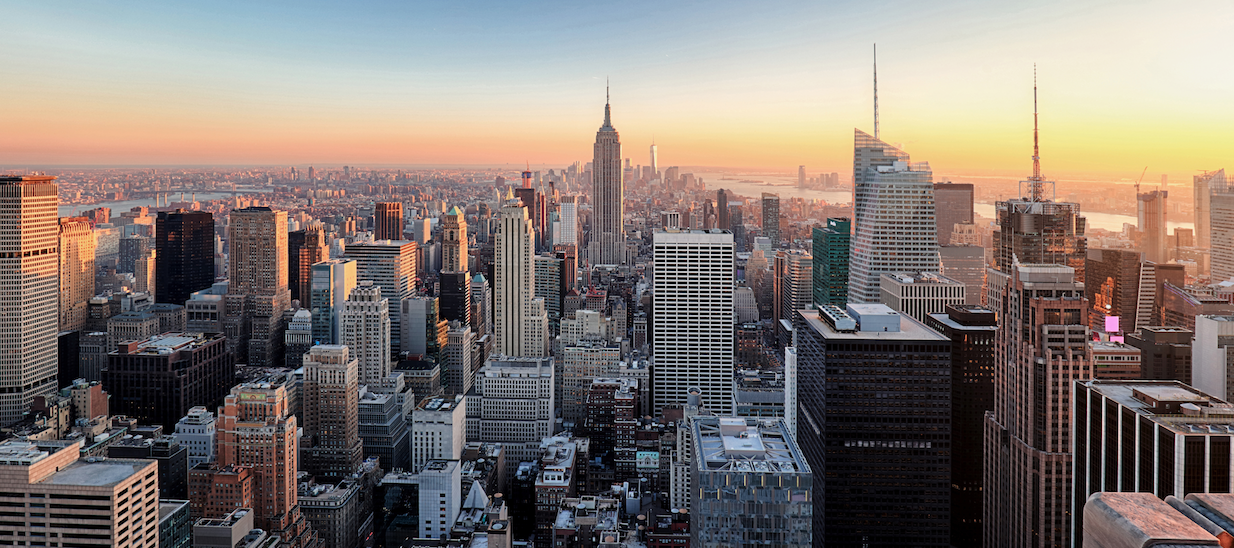Glass Skyscrapers Have Turned Entire Cities Into Energy Vampires
Credit to Author: Anne Gaviola| Date: Tue, 09 Jul 2019 17:01:19 +0000
On April 22, Earth Day, New York Mayor Bill de Blasio sent a ripple of fear through the city’s construction and real estate industry when he announced he would “introduce legislation to ban glass and steel skyscrapers that have contributed so much to global warming. They have no place in our city or on our Earth anymore.”
The ban is likely coming in the form of stricter energy codes for new buildings only, which de Blasio’s office has confirmed to VICE that it aims to have in place next year. According to experts, those glass skyscrapers are energy guzzlers and the biggest contributors to greenhouse gas emissions in urban centres—even more so than transportation. And ignoring them means that one of the biggest catalysts for climate change remains unchecked.
According to the United Nations’ Intergovernmental Panel on Climate Change (IPCC), 40 percent of global energy use is caused by buildings—and they are responsible for one-third of the world’s greenhouse gas emissions.
The outsized impact of buildings is amplified in densely-populated major metropolitan centres. A 2017 study found that 66 percent of greenhouse gas emissions in New York came from buildings. This is comparable to research on Toronto, which shows that buildings create 60 percent, and the vast majority, of the city’s greenhouse gas emissions. The two main sources from buildings are electricity consumption and natural gas, which are used for cooling, heating, refrigeration, and lighting.
There are relatively low-tech ways to avoid creating energy vampires, but energy and sustainability analyst Marine Sanchez, who works for RDH Building Science with the City of Toronto, said it’s an uphill battle getting the construction and real estate industry onboard because glass buildings are hugely popular and therefore profitable.
But she said that if the public truly understood how wasteful and costly glass buildings are long-term, there would be less demand for them.
“It is our duty to educate and make people aware that you can have a building that is incredibly comfortable and is the solution to saving the planet,” she said.
Plus, once the glass buildings are up, they’re a source of daily frustration for the people who have to live and work in them.

“Talk to the occupants, as opposed to the people designing the space. An entire glass facade is not what people are after,” she said. “If you’re in an office and there’s glare the entire day, then these are not adequate conditions. Privacy, if it’s your bedroom, it’s open everywhere to all the neighbours. Or if you’re at work, wearing a skirt and everybody can see you.”
Sanchez is a proponent of the Passive House standard, a well-established energy process that makes dwellings and workplace buildings more efficient. There are more than 2 million square feet of Certified Passive House building space across North America, which is three times as much as in 2015.
Through better and continuous insulation, airtightness and ventilation with heat recovery, the cost of heating a building can be reduced by 90 percent. That’s significant when you consider the fact that getting structures to this level of energy efficiency doesn’t require much upfront—it’s an estimated 5 to 10 percent in increased construction costs.
When you implement the changes is crucial and can drive up costs, or keep them very low, according to Sanchez. “If you do it from day one, I’ve seen Passive House projects delivered at no extra cost. If you do it the day before going to site, it becomes very expensive.”
The decrease in the amount of energy needed to keep a home comfortable is drastic. If done properly, heat generated by the people inside the dwelling as well as the lights, TV, and warmth from the sun, are all conserved.
“An 1,800-square-foot house could be heated with a hair dryer in the middle of winter or a couple of candles in each room. Your enclosure becomes so efficient that very little heat escapes; it doesn’t leak,” said Sanchez.
But the glass buildings of today won’t achieve the Passive House level of energy efficiency.
Sanchez said that on the climate change front, political buy-in is noticeably better in Canadian cities such as Vancouver and Toronto. But based on her experience, raising public awareness is necessary and the industry isn’t quick to embrace a new way of doing things.
“If you don’t explain to the people in front of you, the contractor, the developer, the architect, the owner, why we’re trying to do this, then it is met with resistance. But it’s hard to change people and we need to make this the new normal. It’s not the technology that is holding us back,” she said.
Follow Anne on Twitter .